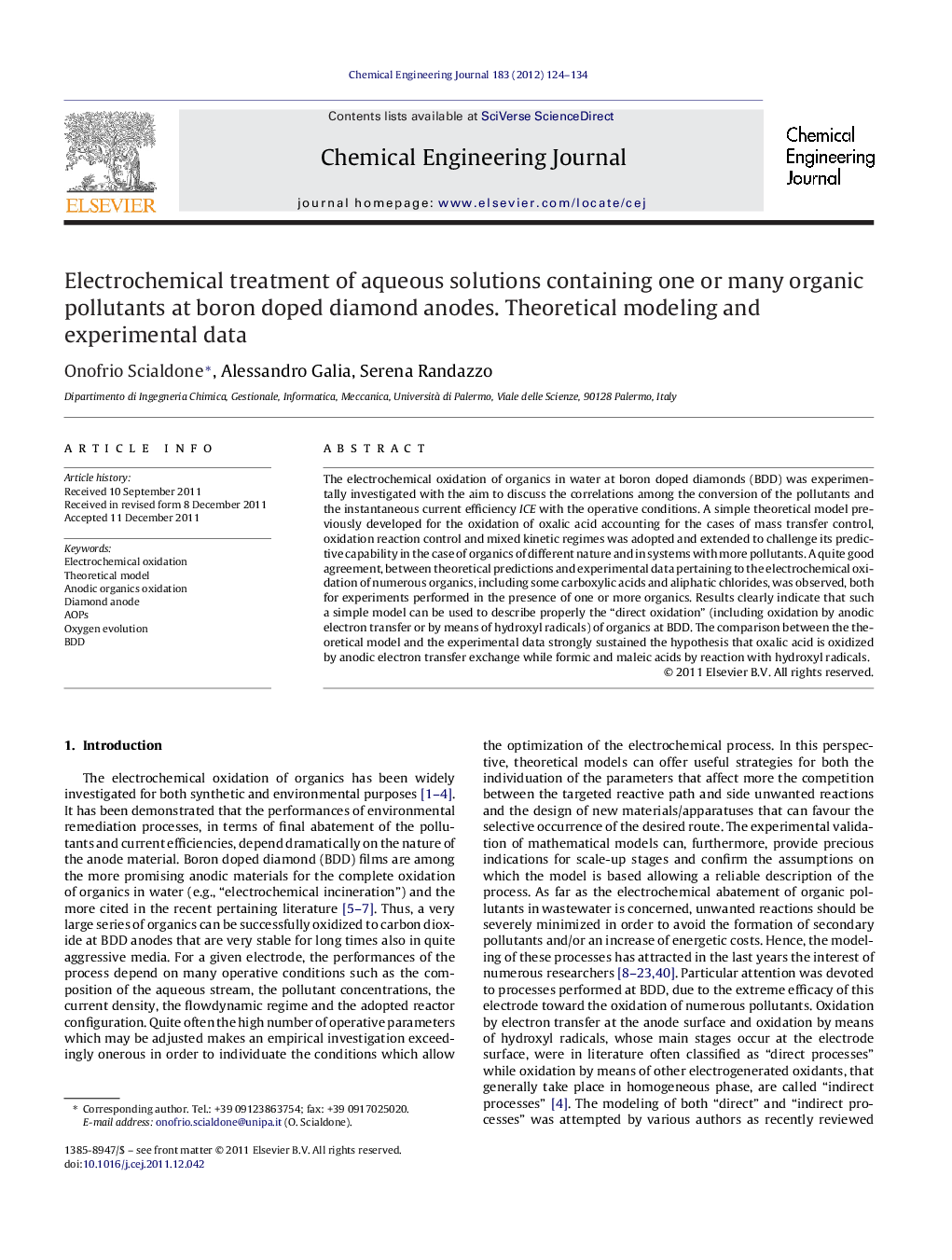| کد مقاله | کد نشریه | سال انتشار | مقاله انگلیسی | نسخه تمام متن |
|---|---|---|---|---|
| 150291 | 456447 | 2012 | 11 صفحه PDF | دانلود رایگان |

The electrochemical oxidation of organics in water at boron doped diamonds (BDD) was experimentally investigated with the aim to discuss the correlations among the conversion of the pollutants and the instantaneous current efficiency ICE with the operative conditions. A simple theoretical model previously developed for the oxidation of oxalic acid accounting for the cases of mass transfer control, oxidation reaction control and mixed kinetic regimes was adopted and extended to challenge its predictive capability in the case of organics of different nature and in systems with more pollutants. A quite good agreement, between theoretical predictions and experimental data pertaining to the electrochemical oxidation of numerous organics, including some carboxylic acids and aliphatic chlorides, was observed, both for experiments performed in the presence of one or more organics. Results clearly indicate that such a simple model can be used to describe properly the “direct oxidation” (including oxidation by anodic electron transfer or by means of hydroxyl radicals) of organics at BDD. The comparison between the theoretical model and the experimental data strongly sustained the hypothesis that oxalic acid is oxidized by anodic electron transfer exchange while formic and maleic acids by reaction with hydroxyl radicals.
► A simple model could describe the direct oxidation of numerous organics at BDD.
► The effect of various operative parameters was described and predicted.
► The model describes the concentration profiles with time of various pollutants present in the system.
Journal: Chemical Engineering Journal - Volume 183, 15 February 2012, Pages 124–134